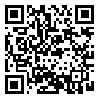Volume 4, Issue 2 (June 2025)
IJER 2025, 4(2): 0-0 |
Back to browse issues page
Download citation:
BibTeX | RIS | EndNote | Medlars | ProCite | Reference Manager | RefWorks
Send citation to:



BibTeX | RIS | EndNote | Medlars | ProCite | Reference Manager | RefWorks
Send citation to:
Rahmani A, Foroozanfar A, Jaafari S. (2025). Quranic Stories and Creative Thinking in Quranic Students. IJER. 4(2),
URL: http://ijer.hormozgan.ac.ir/article-1-269-en.html
URL: http://ijer.hormozgan.ac.ir/article-1-269-en.html
1- Associate Professor in Arabic Language and Literature, University of Hormozgan, Bandar Abbas, Iran , rahmani6038@gmail.com
2- Assistant Professor, Faculty of Human Sciences, University Of Hormozgan, Bandar Abbas, Iran
3- Ph.D. in Arabic Language and Literature, Shiraz University, Shiraz, Iran
2- Assistant Professor, Faculty of Human Sciences, University Of Hormozgan, Bandar Abbas, Iran
3- Ph.D. in Arabic Language and Literature, Shiraz University, Shiraz, Iran
Abstract: (279 Views)
Objective: Narratives serve as a form of educational content that assumes a pivotal role in the assessment of arguments while fostering children's creative thinking and enhancing their cognitive capabilities. Among the various categories of narratives are Quranic tales, which, in addition to amplifying children's creativity and analytical thought, are instrumental in the spiritual education process and the internalization of their moral and social principles. Consequently, the objective of the current research is to explore the correlation between Quranic narratives and the creative thinking skills of Quranic learners.
Methods: This investigation is classified as a survey study, with the data being subjected to analysis via a single-sample t-test and the Friedman test. The statistical population for this study comprises 25 educators from the Muhammad bin Jazari Quranic Institute located in Shiraz. Data acquisition was executed through a questionnaire crafted by the researcher.
Results: The outcomes of the research reveal a statistically significant association between Quranic tales and the enhancement of creative thinking among Quranic learners. Among the various dimensions of the relationship between Quranic narratives and creative cognition, the aspect concerning the relationship between Quranic tales and intellectual development registers the highest measure at 15.39, while the aspect of illustrating Quranic storybooks demonstrates the most substantial connection with the augmentation of children's creative thought.
Conclusions: The insights derived from this study may prove beneficial in the formulation of interventions predicated on the reading of Quranic narratives to cultivate creative thinking among Quranic learners.
Methods: This investigation is classified as a survey study, with the data being subjected to analysis via a single-sample t-test and the Friedman test. The statistical population for this study comprises 25 educators from the Muhammad bin Jazari Quranic Institute located in Shiraz. Data acquisition was executed through a questionnaire crafted by the researcher.
Results: The outcomes of the research reveal a statistically significant association between Quranic tales and the enhancement of creative thinking among Quranic learners. Among the various dimensions of the relationship between Quranic narratives and creative cognition, the aspect concerning the relationship between Quranic tales and intellectual development registers the highest measure at 15.39, while the aspect of illustrating Quranic storybooks demonstrates the most substantial connection with the augmentation of children's creative thought.
Conclusions: The insights derived from this study may prove beneficial in the formulation of interventions predicated on the reading of Quranic narratives to cultivate creative thinking among Quranic learners.
Type of Study: Original |
Subject:
Educational Studies
Received: 2024/09/14 | Accepted: 2024/12/5 | Published: 2025/06/1
Received: 2024/09/14 | Accepted: 2024/12/5 | Published: 2025/06/1
Send email to the article author
| Rights and permissions | |
 |
This work is licensed under the Creative Commons - Attribution 4.0 International. |






